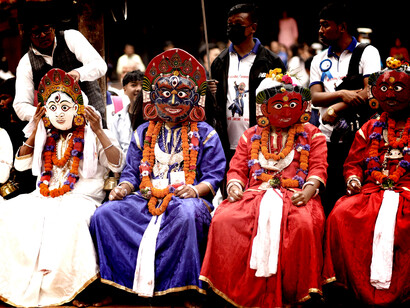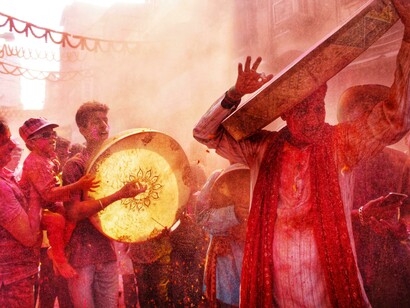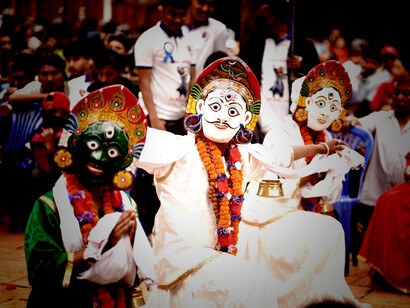Nepal, nestled in the heart of the Himalayas, is a land of breathtaking natural beauty, rich cultural heritage, and spiritual serenity. Whether you're a trekking enthusiast, a cultural explorer, a spiritual seeker, or a wildlife lover, Nepal offers something for everyone. However, timing your visit is crucial to experiencing the country at its best. Due to Nepal’s diverse geography and altitudinal range—from tropical lowlands to the highest mountains in the world—weather patterns vary significantly across regions. Understanding these seasonal differences is key to making the most of your journey.
This comprehensive guide explores the best times to travel to Nepal, highlighting key seasons, climate trends, major festivals, and ideal activities throughout the year. Whether you're planning to trek to Everest Base Camp, explore the temples of Kathmandu, or witness wildlife in Chitwan National Park, this article will help you choose the perfect time for your Nepal adventure.
Overview of Nepal’s climate
Nepal’s climate can be broadly categorized into four main seasons: spring (March to May), summer/monsoon (June to August), autumn (September to November), and winter (December to February). Each season offers unique experiences and presents different advantages depending on your interests and travel goals.
Spring (march to may)
Spring is one of the most popular seasons to visit Nepal. During these months, the weather is warm and pleasant, particularly in the mid-hills and mountainous regions. Temperatures range from 16°C to 25°C in Kathmandu, while higher elevations remain cooler. The hillsides come alive with blooming rhododendrons—Nepal’s national flower—adding vibrant shades of red, pink, and white to the landscape, especially in regions like Ghorepani and Langtang. The skies are generally clear, offering stunning mountain views, and this makes spring a paradise for trekking, particularly in the Everest, Annapurna, and Langtang regions.
Spring also hosts colorful and vibrant festivals such as Holi, the Festival of Colors, which is celebrated in March to welcome the season. Bisket Jatra, marking the Nepali New Year, is another major festival celebrated in Bhaktapur with traditional chariot processions and local festivities. This season is ideal for trekking, jungle safaris, cultural tours, and bird watching.
Summer/Monsoon (june to august)
The summer months coincide with the monsoon season in Nepal, marked by heavy rainfall and high humidity. Temperatures can climb to 30°C in the lowlands, and although rain usually falls in the evenings or at night, mornings can still be pleasant. The landscape turns lush and green, offering a unique and vibrant experience with fewer tourists and reduced travel costs.
However, there are some drawbacks. Landslides and road disruptions are common in hilly areas, and leeches and muddy trails make trekking challenging. Additionally, mountain views are often obscured by cloud cover. Despite these challenges, summer is rich in cultural celebrations such as Ropain, the rice planting festival celebrated with lively mud dances and songs, Gai Jatra—a Newar festival that honors deceased family members, and Janai Purnima and Raksha Bandhan, both celebrated in August with religious significance.
For travelers, this is a great time to visit rain-shadow areas like Mustang and Dolpo, go on cultural tours in the Kathmandu Valley, explore Ayurvedic retreats, or engage in photography and village homestays.
Autumn (september to november)
Autumn is widely regarded as the best time to visit Nepal. The monsoon rains clear the atmosphere, resulting in pristine skies, moderate temperatures (10°C–25°C), and low humidity. The Himalayas are visible in sharp detail, making this the ideal season for trekking with cool air and dry trails.
Cultural festivities also peak during this season. Dashain, the longest and most important Hindu festival, is celebrated over 15 days. Tihar, also known as the Festival of Lights or Deepawali, honors animals and is marked by candles, music, and decorative lights. Indra Jatra, a major festival in Kathmandu, features traditional dances and elaborate chariot processions.
Autumn is perfect for trekking in regions such as Everest, Annapurna, and Manaslu. It’s also a great time for paragliding in Pokhara, mountain flights over the Himalayas, wildlife safaris, and photography tours.
Winter (december to february)
Winter in Nepal brings colder temperatures, particularly in mountainous areas, but the days remain mostly dry and sunny. In Kathmandu, temperatures can drop to 2°C in the mornings but warm up to around 15°C by afternoon. This is a peaceful time to explore Nepal, with fewer tourists and off-season discounts on flights and accommodations.
The season offers clear skies for mountain photography and quiet trails for those seeking solitude. However, higher altitudes become extremely cold, and many lodges may close due to snow. Despite these challenges, low-altitude treks such as Ghorepani and Ghandruk remain accessible. Cultural sightseeing, birdwatching in the Terai, and wildlife safaris in Chitwan and Bardia are also ideal winter activities.
Festivals like Maghe Sankranti, celebrated in January to mark the end of the winter solstice, and Losar, the Tibetan New Year, observed in Himalayan regions, provide a cultural dimension to winter visits.
Best time for specific activities
For trekking, the best months are March to May and September to November, with popular routes including Everest Base Camp, Annapurna Circuit, Langtang Valley, and Manaslu Circuit. Mountaineering is ideal in April to May and October, with popular peaks like Island Peak, Mera Peak, and Ama Dablam.
Cultural tours are most vibrant from October to November due to the festival season and also from March to April. Jungle safaris are best from October to March, particularly in Chitwan and Bardia National Parks. Spiritual and wellness travel can be enjoyed year-round, depending on the altitude, though it's best to avoid the monsoon. Adventure sports like rafting are best from September to November and March to May, with top rivers including the Trishuli, Bhote Koshi, and Seti.
Traveling by region
Kathmandu Valley is great to visit year-round, although skies are clearest from October to April. Pokhara is pleasant all year, with optimal mountain views from October to April. The Everest and Annapurna regions are best explored in spring and autumn, while lower altitude treks are possible in winter. Mustang and Dolpo, being in rain-shadow areas, are ideal for summer travel between May and September. The Terai region is best visited from October to March, as summers can be uncomfortably hot and humid.
Month-by-month summary
January: cold with clear skies—great for wildlife safaris and low-altitude treks.
February: warmer days and early festivals—ideal for trekking.
March: blooming rhododendrons and Holi celebrations—perfect for trekking.
April: peak trekking season and Bisket Jatra festivities.
May: warmer weather, fewer crowds, good for mountaineering.
June: monsoon begins—best for visiting Mustang and cultural experiences.
July: peak monsoon—lush landscapes and cultural immersion.
August: festival season—travel to Mustang or Dolpo, celebrate Janai Purnima.
September: end of monsoon—start of trekking season.
October: peak travel season with clear skies, ideal for trekking and festivals.
November: excellent mountain views and ideal for photography.
December: dry and chilly—peaceful travel and budget-friendly options.
Practical travel tips
To make the most of your Nepal trip, it’s wise to book early, especially during peak seasons (March–May and October–November). Be sure to check for trekking permits such as the TIMS card and area-specific requirements. Pack for layers, as temperatures can vary drastically, especially with changes in elevation. Stay hydrated, particularly at higher altitudes, and be respectful of local customs and dress appropriately during festivals and religious events.
Conclusion
Nepal is a year-round destination with something for everyone. While autumn (September to November) is considered the best time due to its pleasant climate, clear skies, and rich cultural events, spring (March to May) is equally rewarding, especially for nature lovers and trekkers. Although the monsoon and winter seasons present certain limitations, they also offer unique, off-the-beaten-path experiences for adventurous and culturally curious travelers.
By aligning your trip with the season that suits your interests best, you’ll gain a deeper appreciation of Nepal’s natural wonders, cultural richness, and timeless charm.














